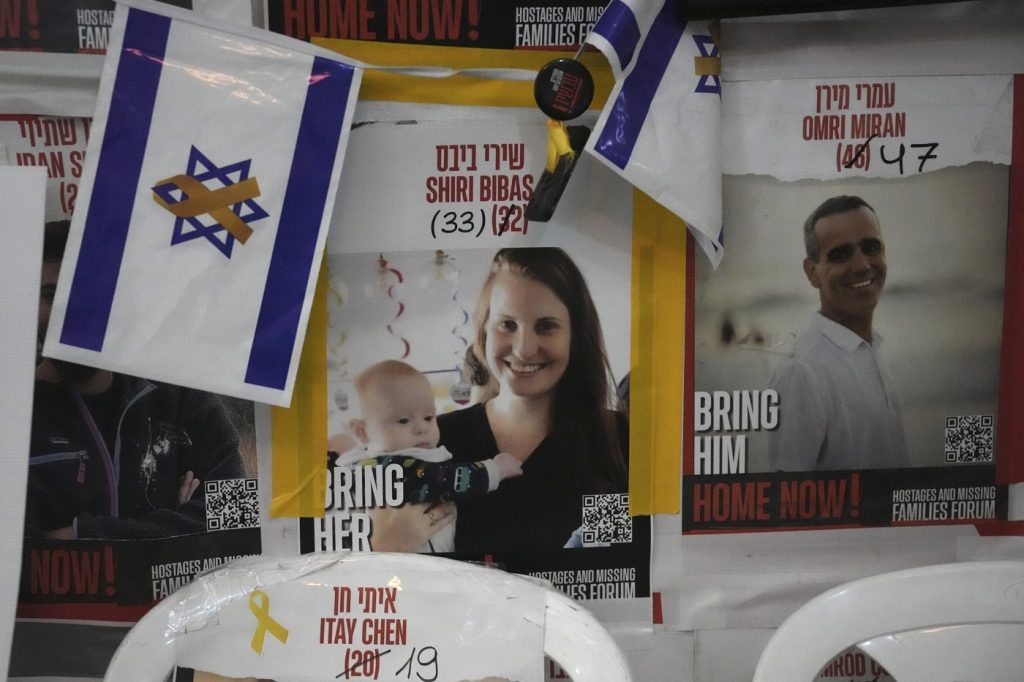JERUSALEM (AP) — Israeli Prime Minister Benjamin Netanyahu has expressed a vow for vengeance after what he termed a “cruel and malicious violation” of a ceasefire agreement. This declaration comes after Hamas released a body, which turned out not to belong to Shiri Bibas, an Israeli mother of two young boys who had been promised to be returned as part of the ceasefire deal. This incident raises significant doubts about the future of the fragile ceasefire, which has temporarily halted over 15 months of conflict.
The situation unfolded when Hamas militants returned four bodies on February 20, 2025, which were intended to include Shiri Bibas and her sons, Kfir and Ariel Bibas, alongside Oded Lifshitz, an 83-year-old man abducted during Hamas's initial attack on October 7, 2023. While the remains of Lifshitz and the two boys were confirmed through identification, the fourth body was revealed not to be that of Shiri Bibas or any other Israeli hostage. Netanyahu stated that the unidentified body was that of a woman from Gaza, and Hamas has yet to comment on this identification.
Netanyahu stated, “We will work with determination to bring Shiri home together with all our hostages — both living and dead — and ensure that Hamas pays the full price for this cruel and malicious violation of the agreement.” He also emphasized the need to honor the memory of Lifshitz and the Bibas boys while asserting that vengeance will be pursued. The Israeli Defense Forces (IDF) noted that the fourth body released by Hamas was an “anonymous, unidentified body,” and the Bibas family was informed of the situation.
The context of this incident is critical. Throughout the ongoing ceasefire, initiated in January, Hamas has been releasing living hostages in return for hundreds of Palestinian prisoners imprisoned in Israel. The recent release is the first instance of Hamas returning the remains of deceased hostages. In contrast, the U.S. envoy Adam Boehler described the erroneous release of the wrong body as “horrific” and a “clear violation” of the ceasefire, urging Hamas to release all hostages to avoid severe consequences.
The implications of this incident are profound as six more living hostages are scheduled to be released soon as part of the ceasefire. However, uncertainties loom regarding whether the next scheduled swap for hostages set for Saturday will proceed. Hamas has hinted at releasing four additional bodies next week, completing the initial phase of the ceasefire. Yet, the truce's extension remains uncertain as concerns about escalating violence persist.
In a troubling development, a series of explosions targeted three parked, empty buses in central Israel overnight, causing no injuries and no claims of responsibility. In response, the Israeli military declared a ramp-up of its presence in the West Bank, indicating a possible escalation of tensions in the area amid ongoing military operations since the ceasefire commenced.
If the forthcoming stages of the ceasefire transpire as planned, it is anticipated that about 60 hostages will remain with Hamas, most of whom are believed to be alive. However, Hamas has stated that the remaining hostages will not be released without an enduring ceasefire and a comprehensive withdrawal of Israeli forces. Netanyahu, backed by the Trump administration, is intent on dismantling Hamas’s military stronghold while ensuring the return of all hostages—a goal widely regarded as not mutually achievable.
The broader geopolitical implications cannot be understated either. Trump’s controversial proposal to relocate about 2 million Palestinians from Gaza to facilitate U.S. ownership and reconstruction efforts has faced widespread rejection from Palestinians and Arab nations, further complicating the ceasefire prospects. The ongoing military offensive by Israel has resulted in significant casualties, with Gaza's Health Ministry reporting over 48,000 deaths, predominantly among women and children. While Israel claims to have killed more than 17,000 militants, the absence of concrete evidence raises further questions about the legitimacy of these figures.
The destruction in Gaza has been catastrophic, leaving vast areas in ruins and displacing 90% of the population during the conflict's peak. Many returning refugees find their homes already demolished and resources for rebuilding nonexistent.










